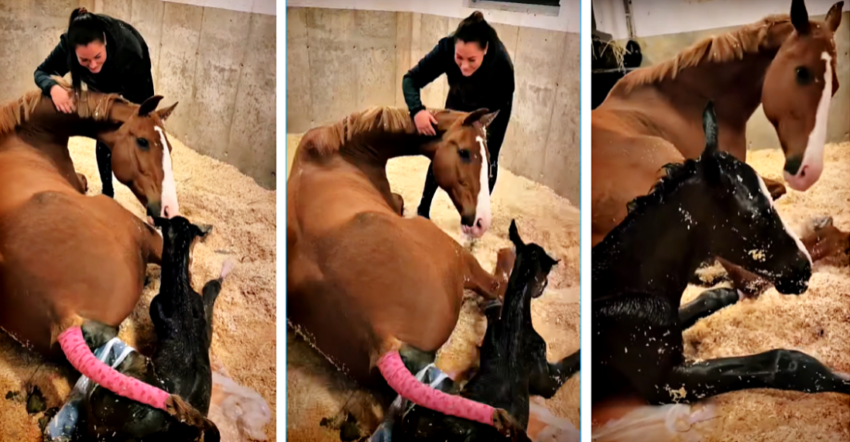There is nothing more beautiful than seeing a horse giving birth. Only horse owners know this incredible feeling and this is what the following video is all about. Before watching the video we should understand how the process works. Horse labor is decided into 3 stages. Stage one lasts for one to two hours and starts when contractions start. Even during a routine delivery, the mare may repeatedly roll, sit up, and lie down to position the foal for delivery. Contractions during this stage help the foal pass through the cervix and go into the birth canal. At the mare’s vulva, the fetal membranes (allantois) may become apparent. Stage one finishes when the sac ruptures, which is indicated by a surge of fluid.

It’s possible to mistake urine for the allantoic membrane rupture and placental fluid flow. The actual evacuation of the foal occurs in stage two. This stage advances rather quickly. There is probably a problem if the mare’s delivery takes longer than 30 minutes. After the membranes have ruptured, if there hasn’t been any noticeable progress after 10 to 15 minutes, call your veterinarian right away. Wait and see if labor appears to be progressing. The normal presentation of the foal resembles a diving position, with the front feet first, one slightly in advance of the other, and the hooves down.

The nose, head, neck, shoulders, and hindquarters are then closely followed. In the event that you see the soles of the foal’s feet facing upward, you should contact your veterinarian right away. Call your equine practitioner if you think there may be any variation from the typical delivery position. The most lethal of all foaling catastrophes is “Red Bag Delivery,” or an early chorioallantois rupture.

The placenta needs to be quickly torn open if you notice crimson or maroon membranes covering the foal. After delivery, stage three labor starts, and this is the time when the placenta is removed. The majority of placentas pass within one to three hours of the foal’s birth. Call your veterinarian if the placenta has not passed within three hours. A retained placenta can result in severe issues like laminitis and widespread infection.
The beautiful baby gets born in the following video. Welcome to the world little baby! Mare takes her first look at the baby and this scene simply made my day. Have a look at the following video for more, let us know your thoughts on the video, and do not forget to spread out the video on social media with your loves ones in order to make their day beautiful as well.
